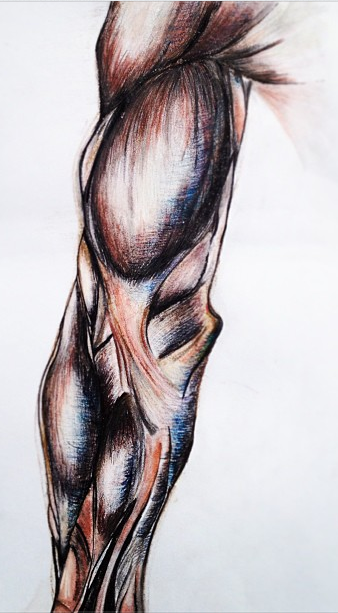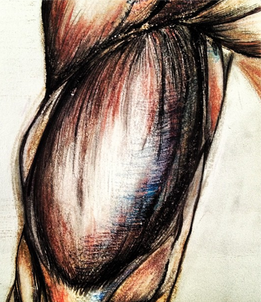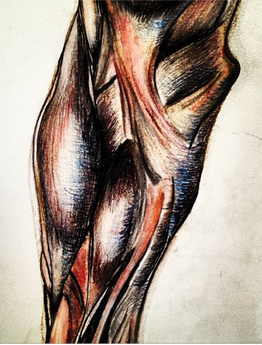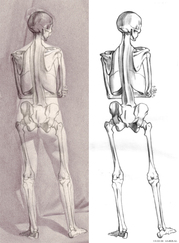| | "An écorché visually constructed to show the muscles of the body without skin. Renaissance architect and theorist, Leon Battista Alberti recommended that when painters intend to depict a nude, they should first arrange the muscles and bones, then depict the overlying skin." (Wikapedia, 2013) I researched more into écorché and Andrew Ameral in particular, who focuses on live models. His work ensures that skeletal and anatomical factors properly align with the figure drawn and match key visual points found on the living. The frontal plane of the arm was drawn to capture the organic uneven look that muscles have that is not present in a lot of anatomy drawings. In the convex shape of the bicep muscle, I used warmer tones to create the illusion of bulging as well as dark tones at the edge, gradually lightening towards the centre so the form advances from the page. Complying with the principle of colour in shadows, the half tones of the muscular form are detailed. I have kept a consistent skin colour bias throughout the image, this local colour is warmed into the light and cool hues are immersed within the shadowed part of the form. These aspects of cool tones are introduced into the shadowed areas following the western lighting convention, as the form is lit from the top front left. As well as the colour variations within the form, a consistency of mark making has been employed through the arm, creating contrast between light and shade. In the lit areas, fine vertical lines have been used to signify the natural shape and flow of the ligaments in the subject. In the shadow areas, the majority of the rendering direction is horizontal to exaggerate contrast and the illusion of spacial depth. |




